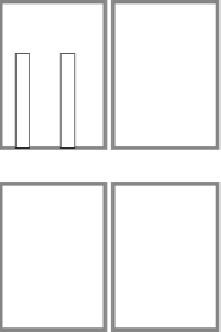Civil Engineering Reference
In-Depth Information
results showed a reduction in strength of connection as the volume of
in situ
concrete decreases. It was recommended that the width of the
in situ
con-
crete on the flange be a minimum of 100 mm. It was also recommended that
two layers of reinforcement must be used in the slab to avoid concrete
splitting.
Push-off tests on headed studs in precast HC slabs were reported by Lam
headed studs used with tapered-end precast HCU slabs and 2 on headed
studs used with reinforced solid concrete slabs). The tests were carried
out horizontally as shown in
Figure 2.22
with the same cross section shown
and 120 mm) between the ends of the precast slabs. Also, different transverse
reinforcement sizes (8, 16, and 25 mm) were used. Two of the 10 tests con-
sisted of two 1200 mm wide
150 mm deep HCUs, whereas others con-
sisted of four 600 mm wide
150 mm deep hollow core units. The units
were connected to grade 43 steel 356
171 UB with prewelded headed
studs at 150 mm centers. Milled slots approximately 500 mm long were
made in the second cores from the edges of the units. The characteristic cube
strength for the precast concrete was taken as 50 N/mm
2
. All studs were
19 mm diameter
125 mm height (TRW-Nelson headed studs). The
authors found that the capacity of the stud is reduced compared with that
in a solid reinforced concrete slab. A reduction formula for the precast effect
28
583
583
Transverse reinforcement
20 mm Stiffeners
POT
Spreader beam
300
500 kN Jacks Stiffeners
500 kN Load cells
500

































































Search WWH ::

Custom Search